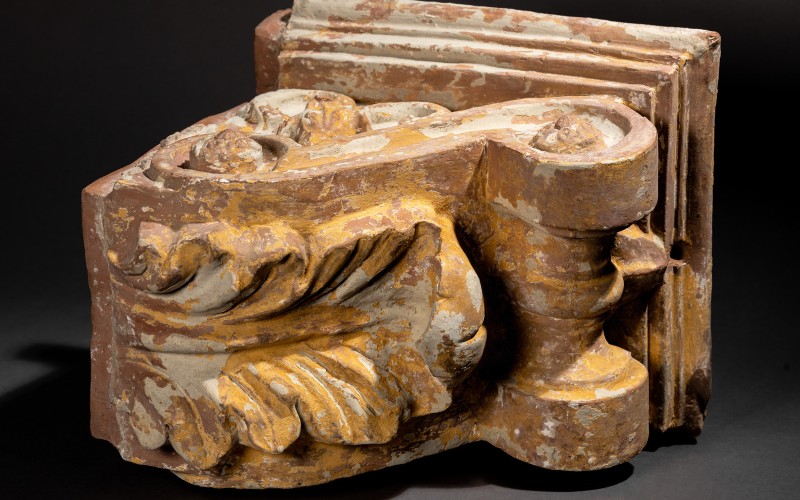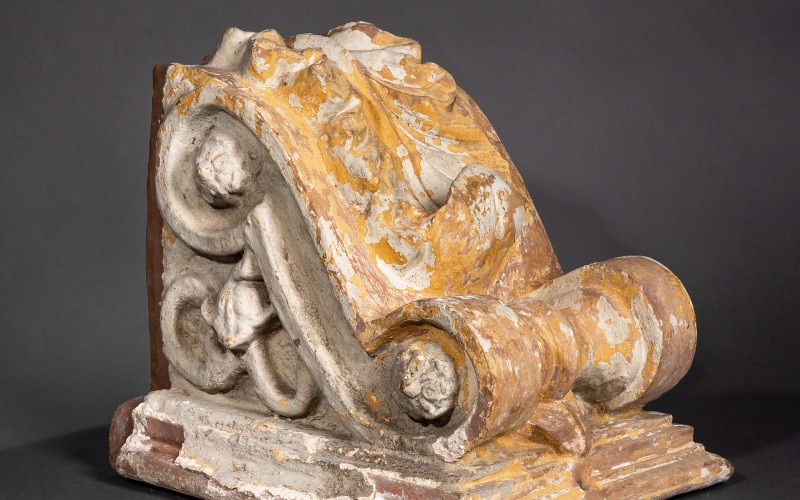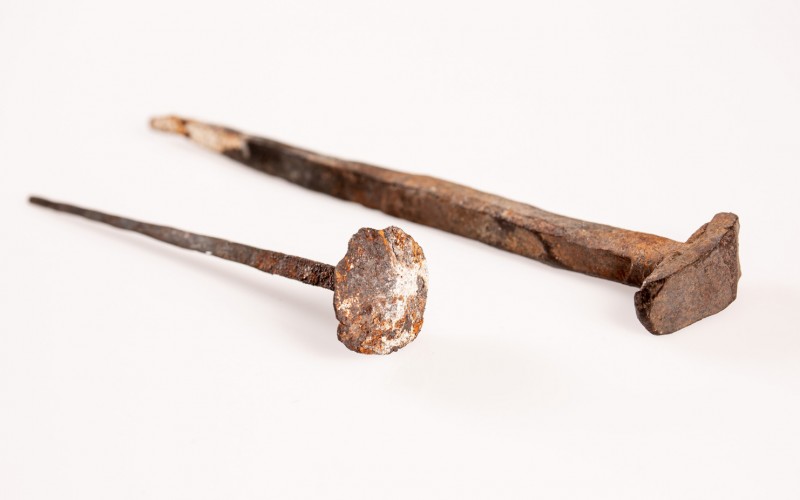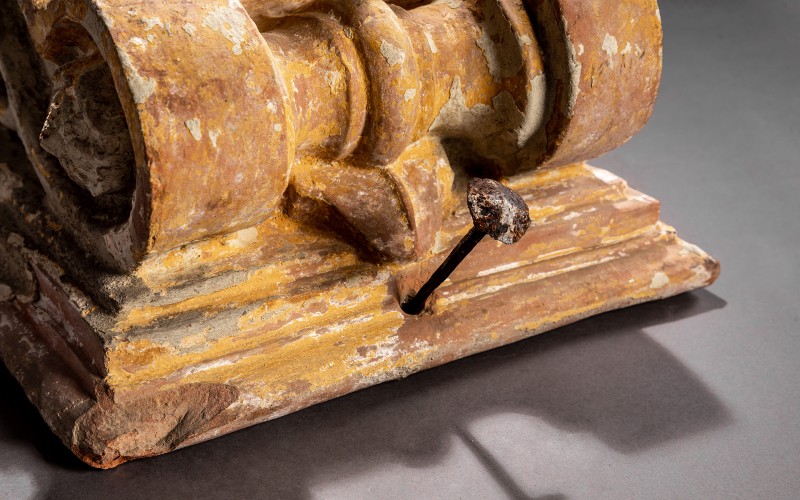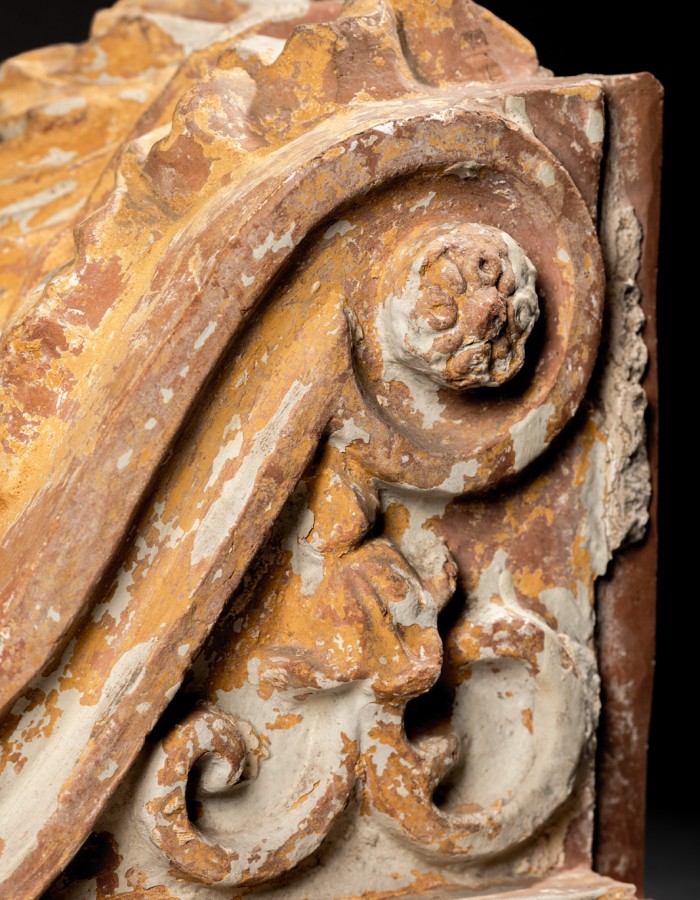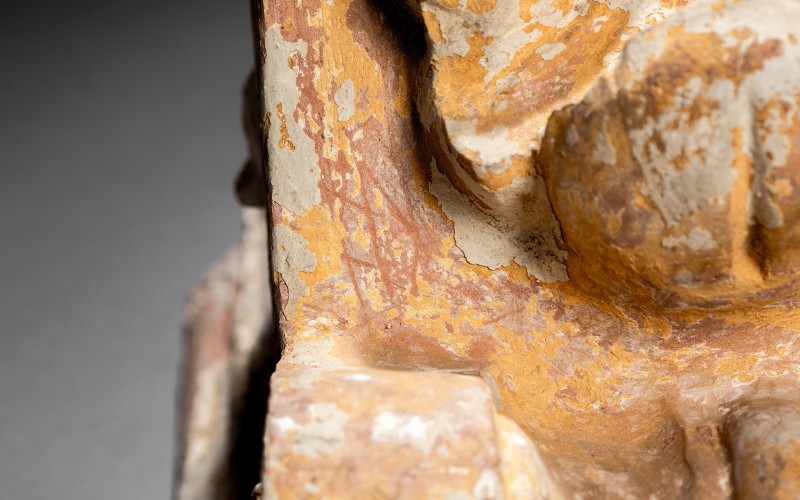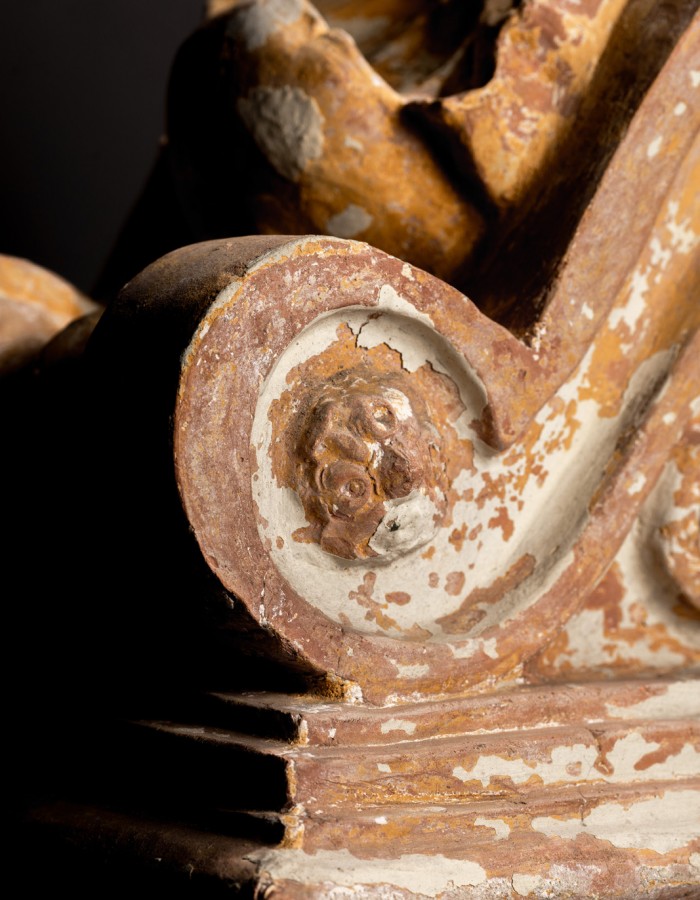Neo-Renaissance style fired clay consoles such as this were used to decorate façades in such a way that they were first attached to the unplastered wall, and then after plastering and painting, the terracotta element was repainted – sometimes several times.
They would be attached at several points, first with a large wrought iron nail that was hammered into the wooden framing above the console through its top cover, then with a thinner wrought iron nail up through furthest projecting upper end. Finally, the open rear section of the fired clay element was set into a recessed track that was cut into the wall to a thickness of 3-4 centimeters, or it was set into the thickness of the plastering. Another technique was to use a nail to affix the console onto the end of a joist projecting from the surface of the façade or onto a projecting engaged column.
The nails used to attach these elements could be of various sizes. Those seen in the photographs are not from Sümeg, but serve to show how the items were fitted and affixed.
The use of prefabricated architectural elements such as this, made from various materials, was a common building practice starting in the 19th century.
András Koppány
Photographs: Éva Wachsler, Gábor F. Tóth

